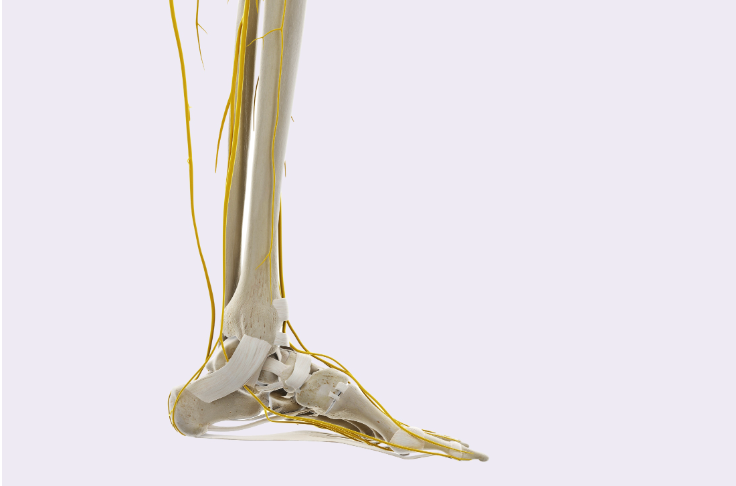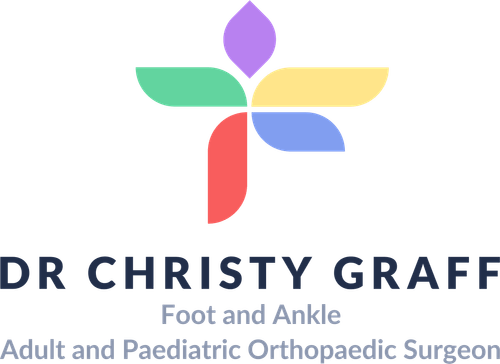Charcot-Marie-Tooth Disease
What is Charcot-Marie-Tooth Disease?
Charcot-Marie-Tooth (CMT) disease, also known as hereditary motor and sensory neuropathy, is an umbrella term for a range of inherited genetic disorders that affect the peripheral nerves in the body. It is named after the three physicians who first described the condition in 1886. CMT causes muscle weakness, loss of sensation, and impaired reflexes in the arms and legs. Orthopaedic issues such as foot drop, high arches in the feet, cavovarus foot deformity, scoliosis, and joint deformities are common in CMT and can impact mobility and quality of life.

Impact of Charcot-Marie-Tooth Disease on Anatomy and Health
CMT primarily impacts the peripheral nervous system, which includes:
- Motor nerves: Leading to muscle weakness and atrophy, especially in the feet, legs, hands, and forearms.
- Sensory nerves: Resulting in reduced sensation or numbness, particularly in the extremities.
Over time, individuals with CMT may experience:
- Difficulty walking due to foot drop and muscle weakness.
- High foot arches or flat feet.
- Loss of fine motor skills, making tasks like buttoning shirts challenging.
- Chronic pain due to nerve damage or muscle strain.
- Skeletal deformities, such as scoliosis or hammer toes.
CMT progresses gradually and is not life-threatening, but it can significantly affect mobility and quality of life.
Risk Factors for Charcot-Marie-Tooth Disease?
- Genetic predisposition: CMT is an inherited condition passed down through families. The risk is higher if one parent carries a mutated gene associated with CMT.
- Family history: Having a close relative with CMT significantly increases the likelihood of developing the disease.
- Certain gene mutations: Specific mutations in over 80 genes have been linked to different types of CMT.
It affects both men and women equally and is typically diagnosed during adolescence or early adulthood, though symptoms may appear at any age.
Causes of Charcot-Marie-Tooth Disease
CMT is caused by genetic mutations that affect the structure or function of peripheral nerves. These mutations may:
- Damage the myelin sheath, the protective covering of nerves, slowing down signal transmission.
- Affect the axons, the part of the nerve responsible for transmitting signals, reducing their ability to function effectively.
Different types of CMT are classified based on the specific genetic mutation and its effect on the nerve.
Symptoms of Charcot-Marie-Tooth Disease
Symptoms of CMT can vary widely depending on the type and severity of the condition.
Some common symptoms include:
- Muscle weakness and atrophy, especially in the feet, legs, hands, and forearms
- Loss of sensation or numbness in the feet and hands
- Impaired reflexes
- Foot deformities such as high arches
- Foot drop, or difficulty lifting the foot when walking
- Scoliosis or other spinal deformities
- Hip instability
Prevention of Charcot-Marie-Tooth Disease
Currently, there is no known way to prevent CMT, as it is a genetic disorder. However, individuals can take steps to manage the condition and reduce complications:
- Genetic counselling: For families with a history of CMT, genetic counselling can help assess risks and inform family planning decisions.
- Lifestyle adjustments: Maintaining a healthy lifestyle, including proper nutrition and regular low-impact exercise, can improve overall well-being.
- Early diagnosis and intervention: Prompt medical care and physical therapy can help manage symptoms and slow the progression of the disease.
- Avoiding nerve stress: Avoid repetitive or strenuous activities that may exacerbate nerve damage.
Types of Charcot-Marie-Tooth Disease
Charcot-Marie-Tooth disease is classified into several types based on the specific genetic mutation and how it affects the nerves. The most common types are:
- CMT1: Caused by mutations affecting the myelin sheath (the protective layer around nerves).
- CMT1A: The most common subtype caused by a duplication of the PMP22 gene.
- CMT1B: Caused by mutations in the MPZ gene.
- CMT2: Affects the nerve's axon (the central part of the nerve fibre), leading to signal transmission issues.
- CMT3 (Dejerine-Sottas disease): A severe form of CMT with early onset, characterised by significant myelin damage.
- CMT4: A rarer type that affects both axons and myelin, often inherited in an autosomal recessive pattern.
- CMTX: Caused by mutations in the GJB1 gene on the X chromosome, affecting males more severely.
Diagnosis of Charcot-Marie-Tooth Disease
A combination of medical history, physical examination, nerve conduction studies, and genetic testing is commonly used to make a diagnosis. Early diagnosis is important for optimising outcomes and addressing orthopaedic issues before they become more severe.
Treatment of Charcot-Marie-Tooth Disease
Treatment for CMT focuses on managing symptoms, improving function, and maximising quality of life. Depending on the individual's needs and goals, treatment may involve a combination of regular exercise and stretching, physiotherapy and occupational therapy. Orthopaedic issues such as foot drop, foot deformity, scoliosis, and hip problems may require surgical intervention or treatment with physiotherapy, bracing, casting, or orthotics to improve mobility and quality of life. CMT is a lifelong and often progressive condition.
What if Charcot-Marie-Tooth Disease is Untreated?
Without treatment or management, CMT can lead to:
- Severe mobility issues: Progressive muscle weakness can make walking or performing daily activities increasingly difficult.
- Skeletal deformities: Unaddressed deformities, such as high arches and hammer toes, can worsen and lead to chronic pain or disability.
- Chronic pain: Unmanaged nerve damage and muscle strain can cause persistent discomfort.
- Emotional and psychological impact: Coping with progressive symptoms can result in anxiety, depression, or social isolation.
Early diagnosis and intervention are critical to minimising complications and maintaining a good quality of life.
Useful Website
